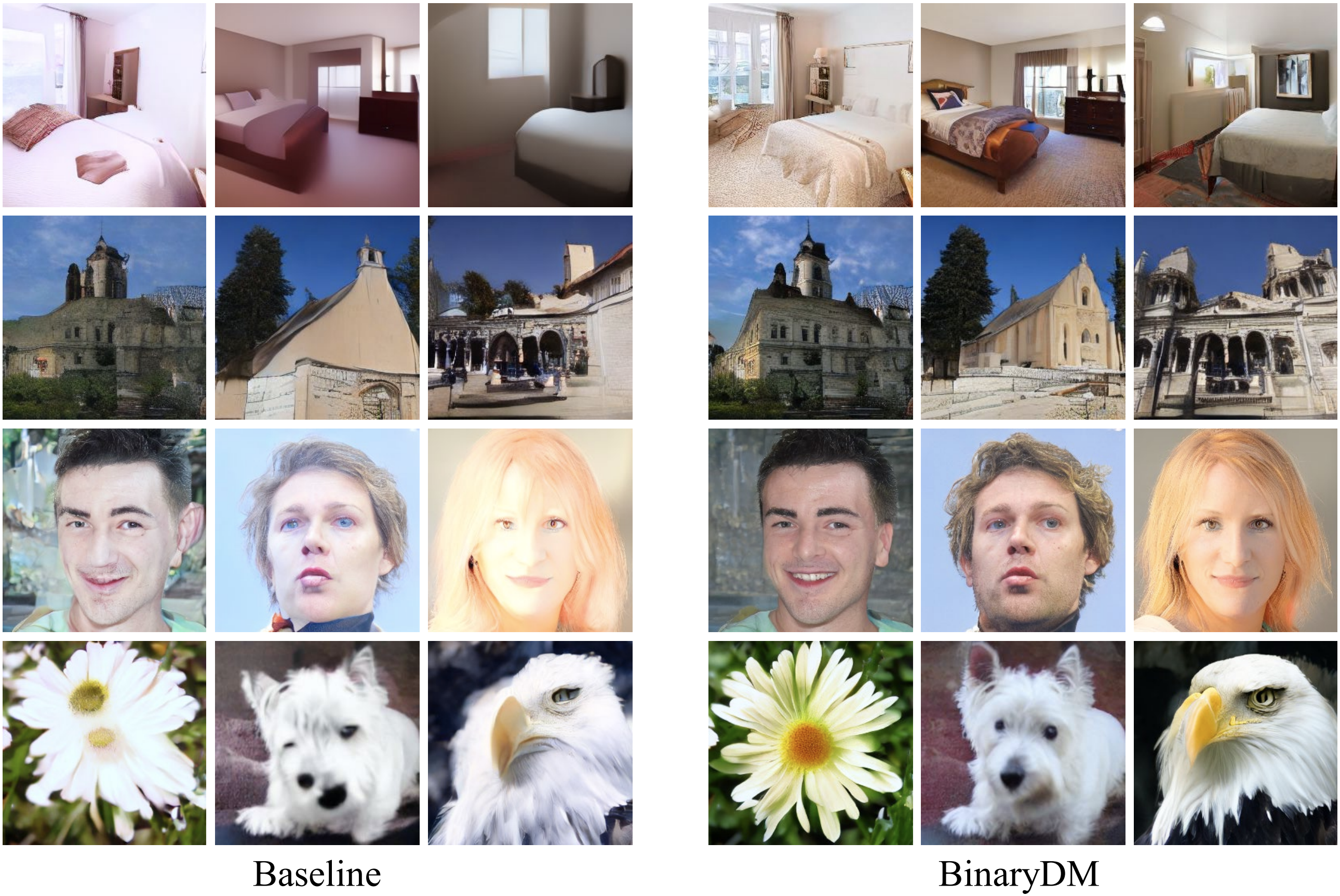Towards Accurate Binarization of Diffusion Model
With the advancement of diffusion models (DMs) and the substantially increased computational requirements, quantization emerges as a practical solution to obtain compact and efficient low-bit DMs. However, the highly discrete representation leads to severe accuracy degradation, hindering the quantization of diffusion models to ultra-low bit-widths. This paper proposes a novel quantization-aware training approach for DMs, namely BinaryDM. The proposed method pushes DMs' weights toward accurate and efficient binarization, considering the representation and computation properties. From the representation perspective, we present a Learnable Multi-basis Binarizer (LMB) to recover the representations generated by the binarized DM. The LMB enhances detailed information through the flexible combination of dual binary bases while applying to parameter-sparse locations of DM architectures to achieve minor burdens. From the optimization perspective, a Low-rank Representation Mimicking (LRM) is applied to assist the optimization of binarized DMs. The LRM mimics the representations of full-precision DMs in low-rank space, alleviating the direction ambiguity of the optimization process caused by fine-grained alignment. Moreover, a quick progressive warm-up is applied to BinaryDM, avoiding convergence difficulties by layerwisely progressive quantization at the beginning of training. Comprehensive experiments demonstrate that BinaryDM achieves significant accuracy and efficiency gains compared to SOTA quantization methods of DMs under ultra-low bit-widths. With 1.1-bit weight and 4-bit activation (W1.1A4), BinaryDM achieves as low as 7.11 FID and saves the performance from collapse (baseline FID 39.69). As the first binarization method for diffusion models, W1.1A4 BinaryDM achieves impressive 9.3 times OPs and 24.8 times model size savings, showcasing its substantial potential for edge deployment.
PDF Abstract


 CIFAR-10
CIFAR-10
 FFHQ
FFHQ